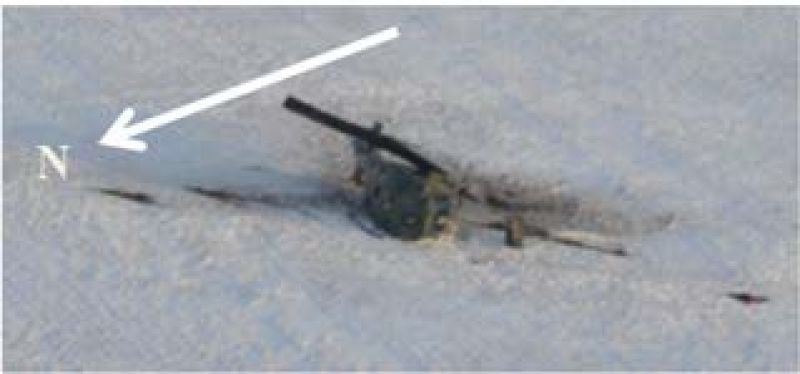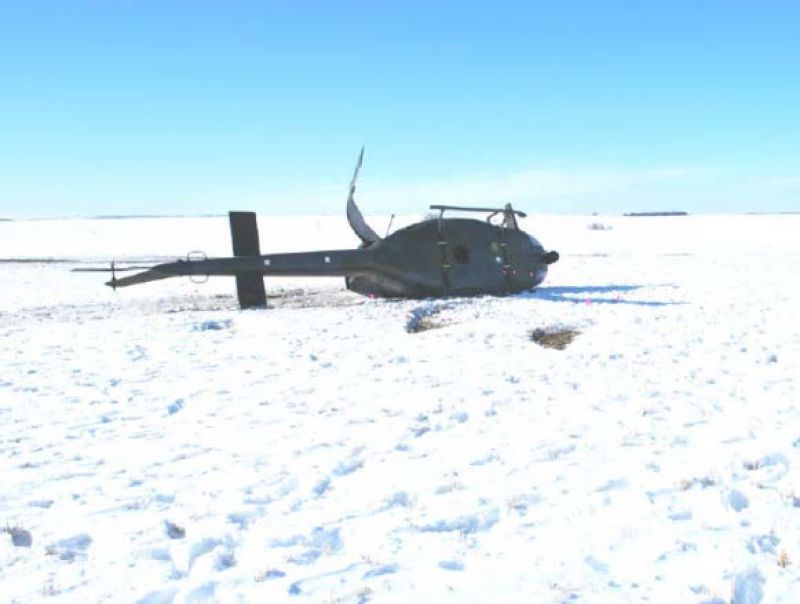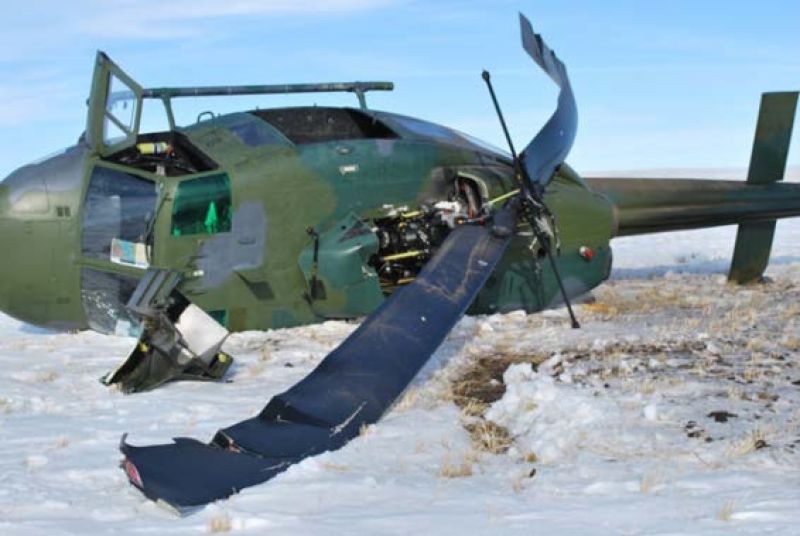Helicopter Accidents
This page documents U.S. Air Force helicopter accidents. If you have any information to contribute, please contact us.
UH-1N
Minot AFB, ND
25 Feb 2013
S/N 69-6660
54th Helicopter Squadron, 91st Missile Wing

On 25 February 2013, at approximately 1043 hours local time, the mishap aircraft (MA), a UH-1N, T/N 69-6660, assigned to the 54th Helicopter Squadron, 91st Missile Wing, Minot AFB, ND rolled over during a precautionary landing while on a training mission. The location of this accident was 10 miles SSE of Parshall, ND.

The MA was 10 miles south southeast of Parshall, ND transiting to Garrison Helicopter Landing Zone. The Mishap Crew (MC) consisted of Mishap Pilot (MP), Mishap Co-Pilot (MCP), Mishap Flight Engineer 1 (MFE1) and Mishap Flight Engineer 2 (MFE2). In addition to the crew, a squadron-assigned Mishap Passenger (MPAX) was onboard the MA. The MC and MPAX egressed from the helicopter following the rollover of the MA. MFE2 sustained a back injury and MPAX injured her left shoulder, MFE1 sustained injuries that manifested after the mishap. The impact damaged the MA with total loss valued at $2,365,515. There was no damage to private property.

The cause of this mishap was determined to be due to loss of tail rotor thrust resulting from failure of the #2 tail rotor driveshaft flexible coupling. The MC had already begun precautionary landing procedures when the UH-1N, S/N 69-6660, 25 February 2013 MA lost tail rotor thrust. The loss of tail rotor thrust at low altitude and low airspeed forced the MP to execute an autorotation with significant yaw and no directional control to sloping, snow-covered terrain. The combination of the yaw due to loss of directional control and the sloping terrain caused the MA to roll upon impacting the ground.

Analysis showed that less than the optimal amount of grease was present in the #2 tail rotor driveshaft flexible coupling immediately preceding the failure, and that the grease was adulterated due to the presence of wear particles. The analysis also shows that lubricant starvation and adulteration led to increased operating temperatures and abrasive wear of the gear teeth, resulting in eventual destruction of the gear teeth. This allowed slippage and destruction of the gears and resulted in the loss of the tail rotor thrust required to counteract the torque of the main rotor and provide directional control.

Integrity, Honor, and Respect
Some of the best things cannot be bought, they must be earned
©2023 USAF Rotorheads All Rights Reserved | Financial Statement

